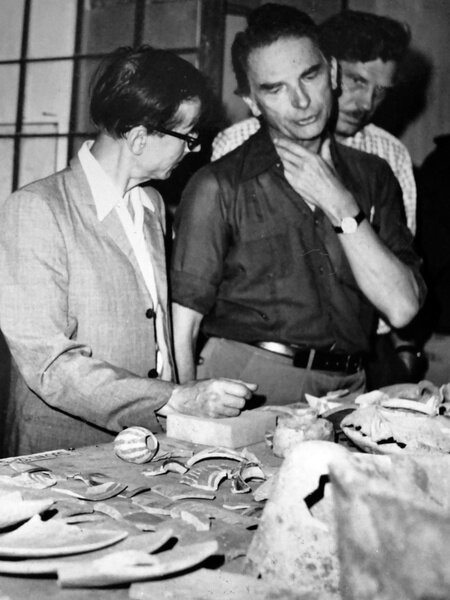French archaeologist Pierre Amiet, famed for intensive Iranian studies, dies at 98

TEHRAN – French archaeologist Pierre Amiet, who joined several excavations in Iran, has died at the age of 98, ILNA reported on Friday.
He was very interested in the archeology of ancient Iran, especially Elam, and came to Iran in 1963 and collected resources to write his book on the Elamite civilization, the report said.
Later, the archaeologist traveled to Iran several times to write a book about the ancient Susa.
Born in Strasbourg in 1922, he came to his interest in archaeology through his father's interests. After World War II he studied at the Ecole du Louvre where he received his License es Lettres.
During this period his association with R. de Mecquenem, L. Le Breton, and G. Contenau led to his continuing interest in the excavations and collections connected with Susa in southern Iran.
In 1958 he was named Conservator of the Musees de Chambrey; in 1961, assistant to Andre Parrot in the Department of Oriental Antiquities at the Louvre. In 1963 M. Amiet visited Iran to study the seal collection in the Archaeological Museum in Tehran and to visit Susa. The next year he published his book, Elam. His lecture, Les Objets d’Art inedits de Susa (Iran) au Musee du Kouvre, covered some of his current research on unpublished materials from Susa.
The UNESCO-registered Susa was one of the city-states of ancient Elam (2700 – 539 BC), which later became a winter capital of the Persian Achaemenid kings, who ruled Iran from c. 550 to 330 BC. Elam was an ancient country in southwestern Iran approximately equivalent to the modern region of Khuzestan province.
Archaeological evidence suggests that Susa has been continuously inhabited since 4,200 BC placing it among the oldest continuously inhabited cities in the world. Besides, there are traces at Susa of a village inhabited around 7,000 BC and painted pottery dating from ca. 5,000 BC at the site.
The archaeological site includes the ruins of the Achaemenid palace complex of Darius I, the Great, and is located on a fifteen-meter-high artificial raised 100-hectare terrace. It has suffered greatly in the past seventy years.
Susa became part of the Persian Empire under Cyrus II, the Great in 538 or 539 BC. During the balance of the Achaemenian period (to 330 BC), Susa functioned as one of the rotating capitals (a winter capital) of the Achaemenian Kings. It is said that Alexander of Macedonia captured Susa in 330 BC and plundered the city, seizing some 40,000 talents of gold and silver from the treasury.
According to UNESCO, “the excavated architectural monuments include administrative, residential, and palatial structures” and the site contains several layers of urban settlement dating from the 5th millennium BC through the 13th century CE. Relics unearthed from the region demonstrate that even the earliest potteries and ceramics in Susa were of unsurpassed quality, decorated with birds, mountain goats, and other animal designs.
Different archaeological seasons in Susa have yielded ample relics including pottery, arms, ornamental objects, metalwork, bronze articles, as well as clay tablets. Susa is also a gateway to several worthy destinations such as the UNESCO-tagged ziggurat of Tchogha Zanbil, the ruins of Achaemenid Apadana Castle, Shush Castle (Akropol), Prophet Danial Shrine, Museum of Susa, the archaeological mount of Haft Tapeh.
AFM
Leave a Comment